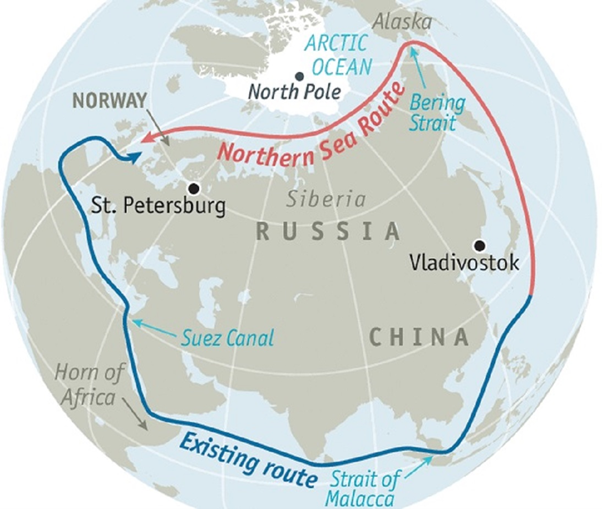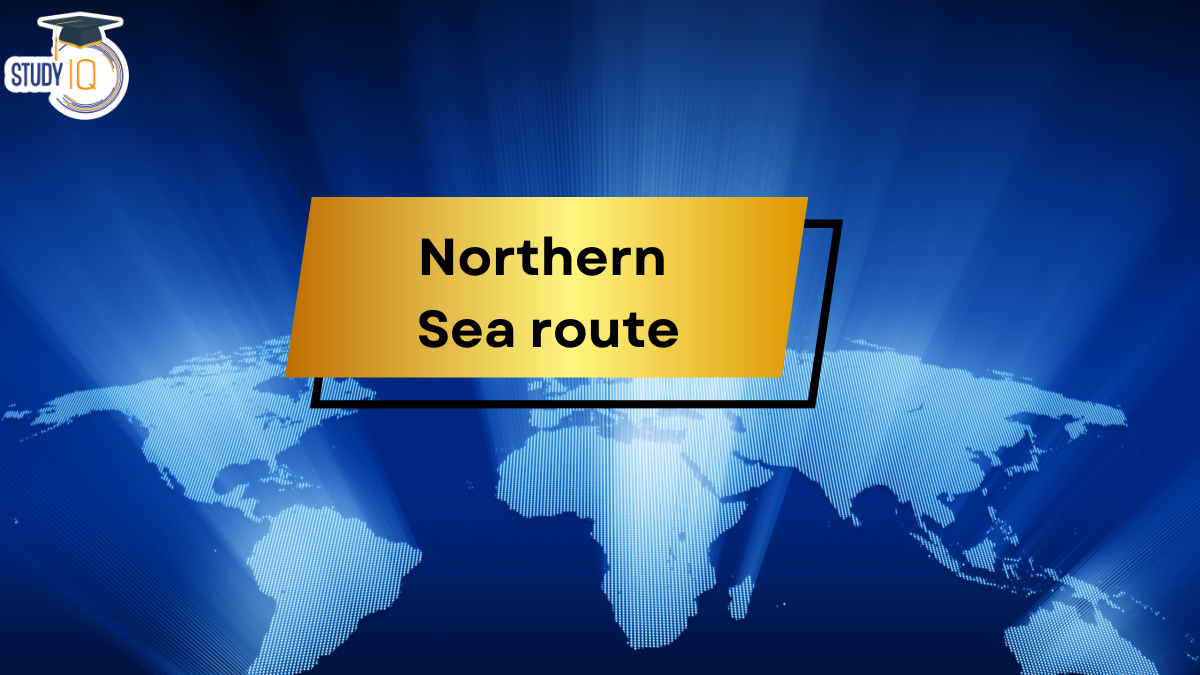Table of Contents
About Northern Sea route (NSR)
- It is a shipping route that runs along the Russian Arctic coast, connecting the Barents Sea to the Bering Strait. It connects the Pacific and Atlantic oceans through the Arctic
- It spans approximately 5,600 km and offers a shorter maritime pathway between Europe and Asia-Pacific.
- The entire route lies in Arctic waters and within Russia’s exclusive economic zone (EEZ)

Advantages Over Traditional Routes
- Reduced Distance: The NSR can save up to 50% in distance compared to traditional routes like the Suez Canal.
- Faster Transit Times: For example, the Chennai-Vladivostok Maritime Corridor (CVMC) is expected to reduce the time required to transport cargo between India and far-east Russia by up to 16 days, cutting the current 40-day travel time by almost half to 24 days.
- Access to Untapped Resources: The Arctic region is believed to hold over 40% of the world’s undiscovered oil and gas reserves, making it strategically important for energy security.
The Northern Sea Route (NSR) has several challenges, including
- Unpredictable weather: The Arctic is known for its unstable weather conditions, including fog, poor visibility and violent winds.
- Icebergs: The Arctic Ocean is home to thick ice layers and icebergs that can obstruct cargo ships and cause disastrous collisions.
- Lack of infrastructure: The Russian Arctic lacks the necessary port infrastructure and connectivity to make the NSR effective.
- Lack of ice-breaking fleets: Major trading nations lack the ice-breaking fleets needed to support the NSR


 Micrometeoroids: Tiny Space Particles, M...
Micrometeoroids: Tiny Space Particles, M...
 India Needs a National Insolvency Tribun...
India Needs a National Insolvency Tribun...
 Unlocking the Potential of India–Afric...
Unlocking the Potential of India–Afric...

























